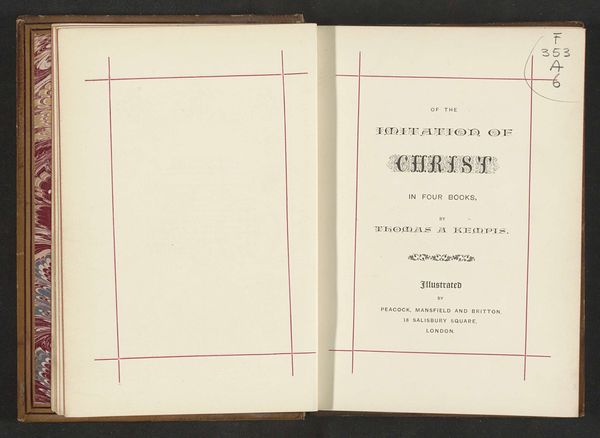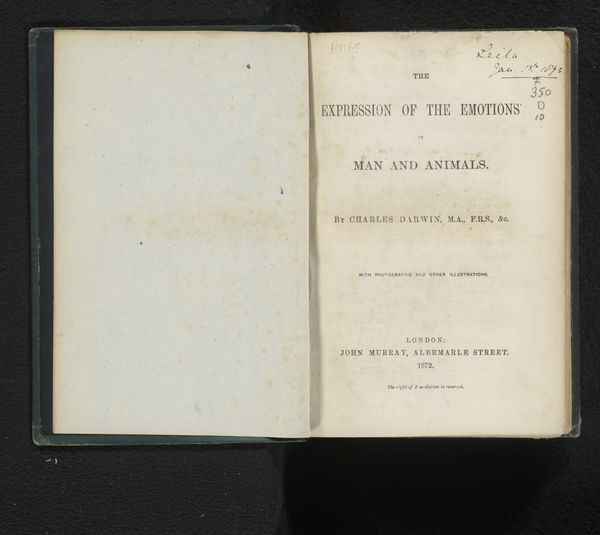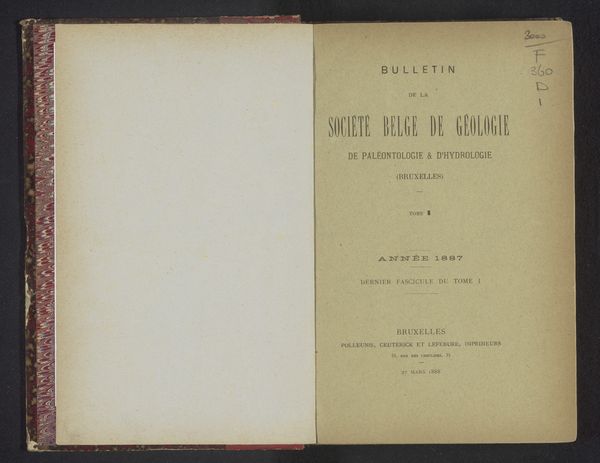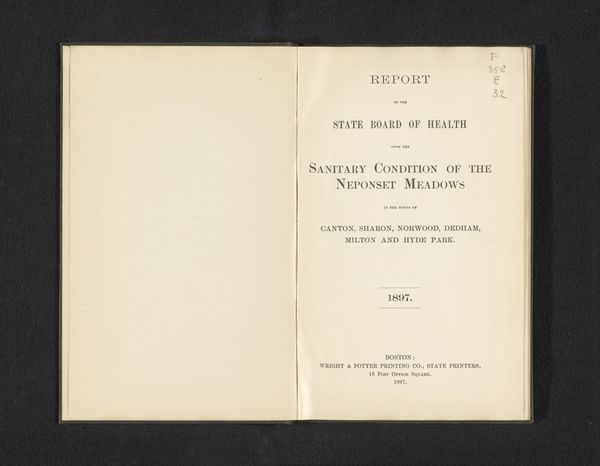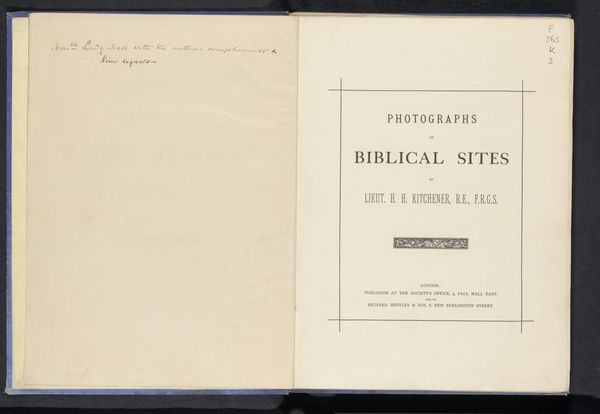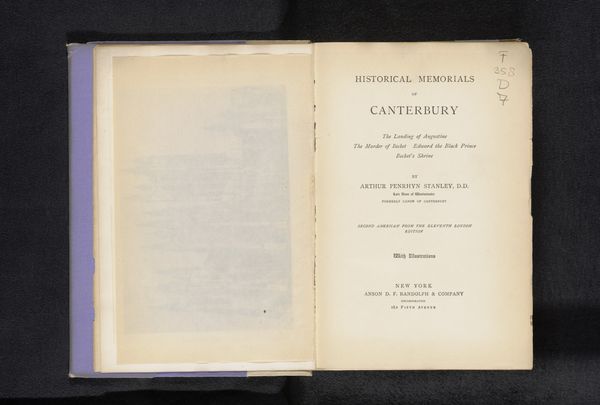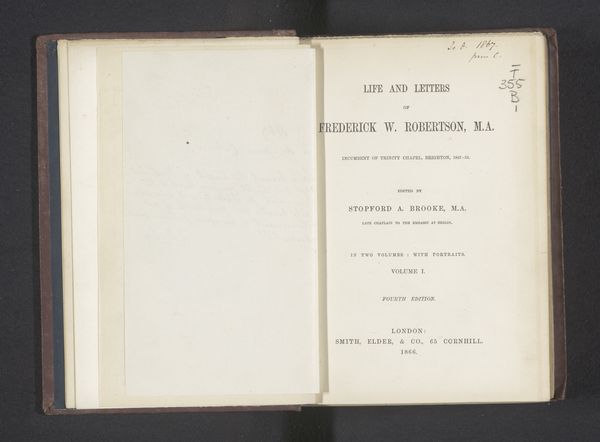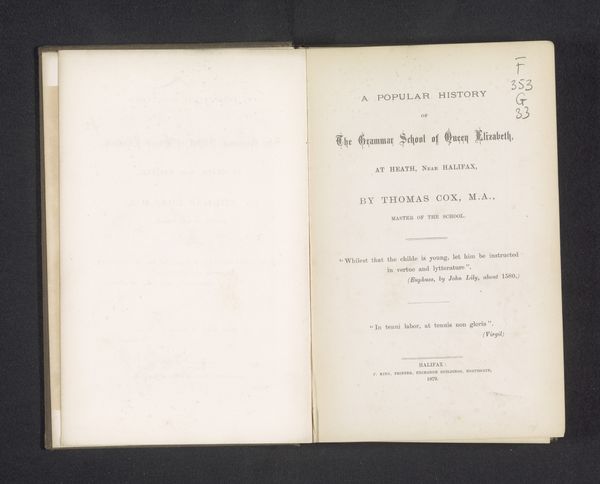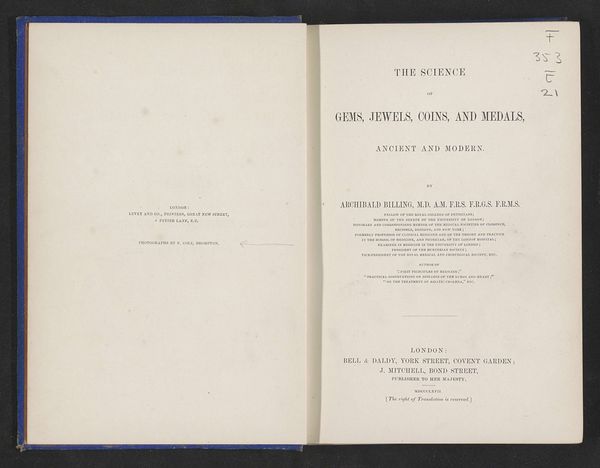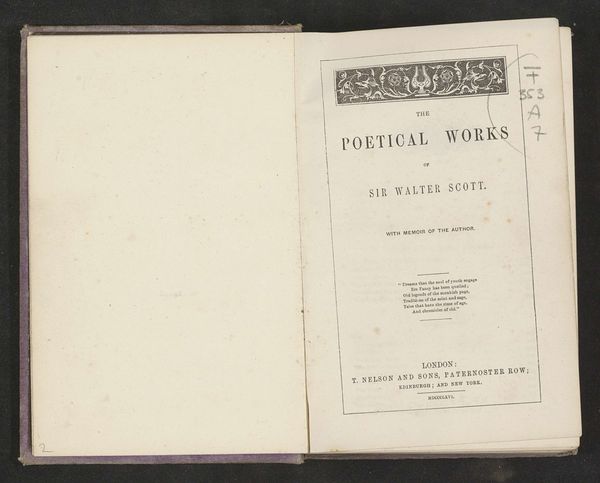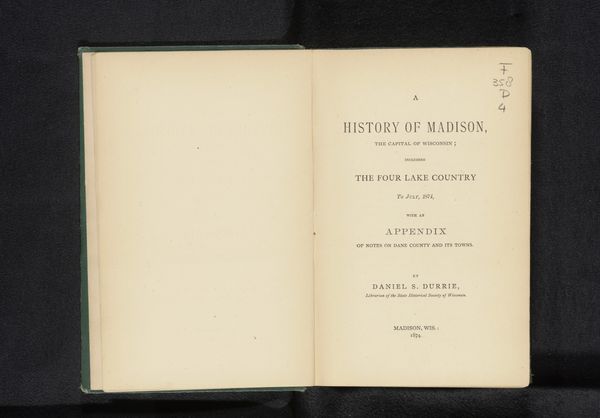
print, photography
#
script typeface
#
script typography
# print
#
hand drawn type
#
photography
#
hand-drawn typeface
#
stylized text
#
thick font
#
handwritten font
#
delicate typography
#
classical type
#
historical font
Dimensions: height 220 mm, width 142 mm, thickness 13 mm
Copyright: Rijks Museum: Open Domain
Curator: Here we have "The Seven Churches of Asia," a photographic print from 1869, featuring the work of M.A. Svoboda and edited with notes by Rev. H.B. Tristram. Editor: The cover's typography feels austere and almost clerical, in stark contrast to the photographic material promised within. It’s oddly compelling; makes me want to dive in to see what stories those churches hold. Curator: The design of the title page reflects the broader cultural anxieties of the period, the negotiation between faith, industrial progress, and a growing understanding of global cultures facilitated by developments in transport and communication. Think about the labor involved in creating the photography and printmaking process. Editor: Yes, exactly. We’re talking about industrializing faith, creating a reproducible artifact of the Holy Land for mass consumption. What interests me is the selection and the arrangement of different fonts; How do they affect legibility or how do they reinforce religious hierarchy? Curator: The publication becomes a tool. The photographs document these sites and make them more "real," while simultaneously flattening the spiritual nuances for Western viewers. Think too, about Tristram’s involvement— he frames Svoboda’s labor for a specific Victorian readership. Editor: Absolutely. It transforms ancient sites of religious significance into commodities. I find myself wondering about Svoboda's experience as a photographer. What resources did they have available? Curator: That's a pertinent question. To explore the conditions of photographic production at that time brings attention to overlooked roles—the technicians and those managing resources—shining light on the power dynamics inherent in these historical documents. Editor: Ultimately, this artifact pushes me to reflect on how mass production reshaped our perceptions of not only faraway places, but also spirituality and belief itself. Curator: And considering these images through a modern, postcolonial lens urges us to reckon with the visual tools that shaped perceptions of cultural heritage that echo to this day.
Comments
No comments
Be the first to comment and join the conversation on the ultimate creative platform.
